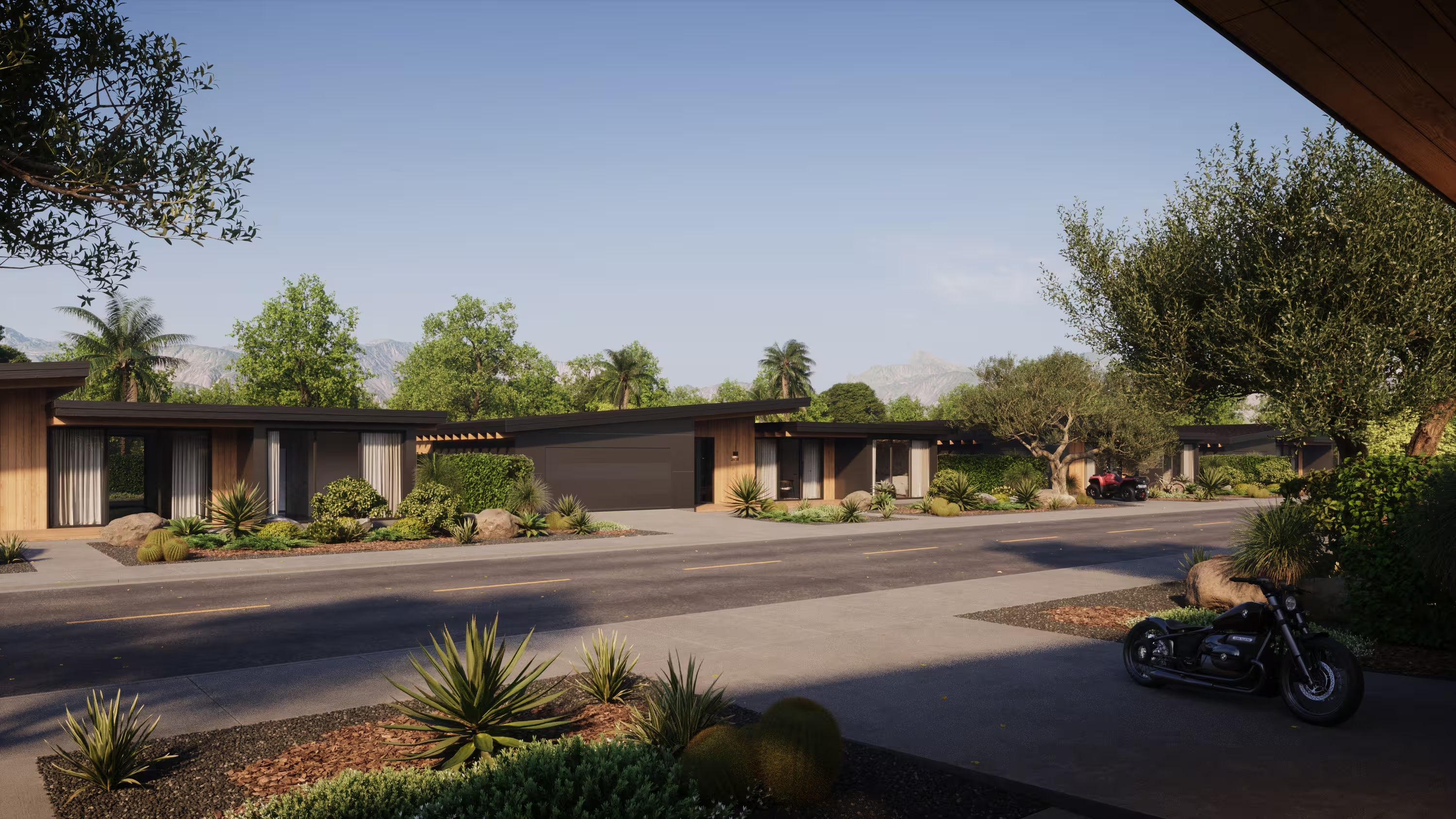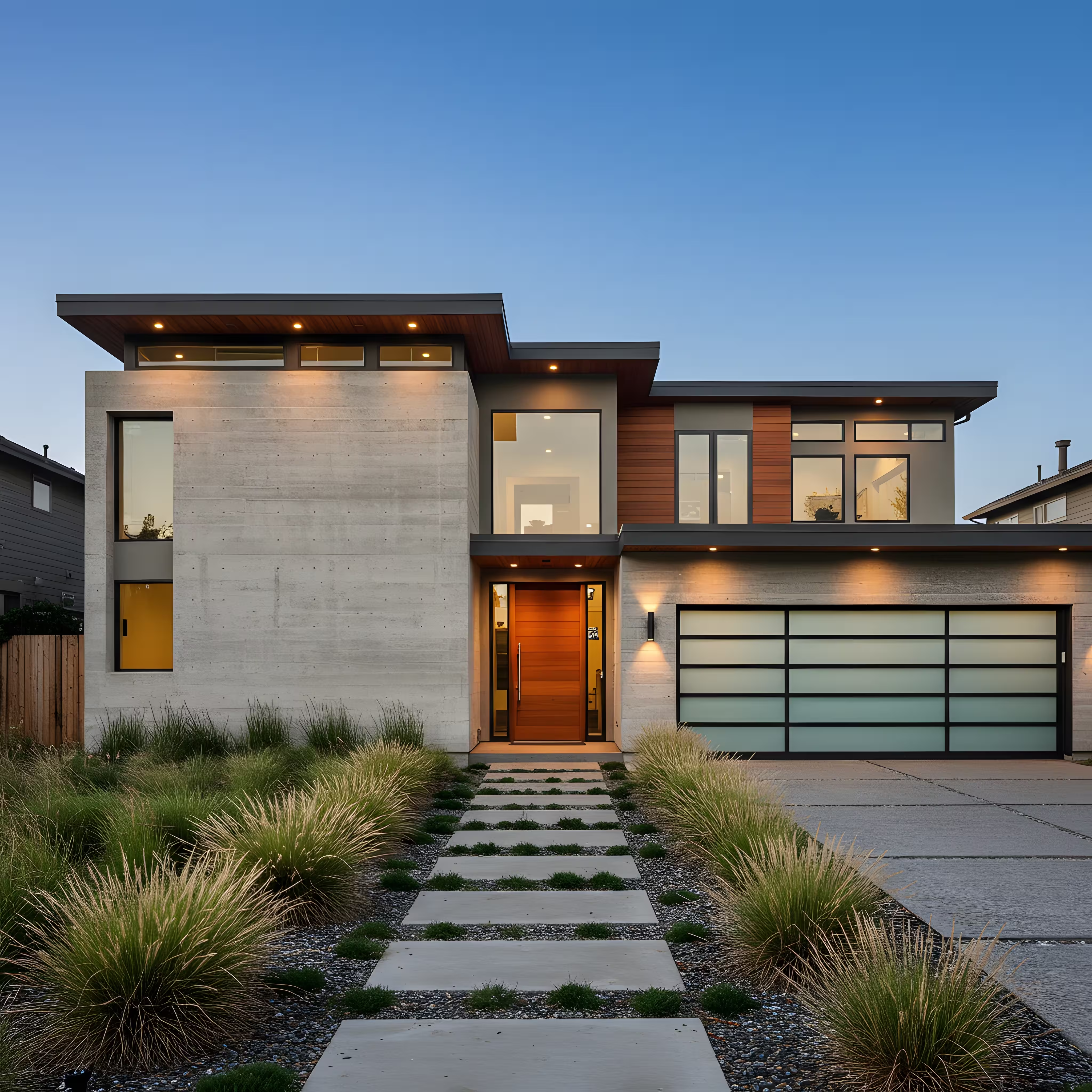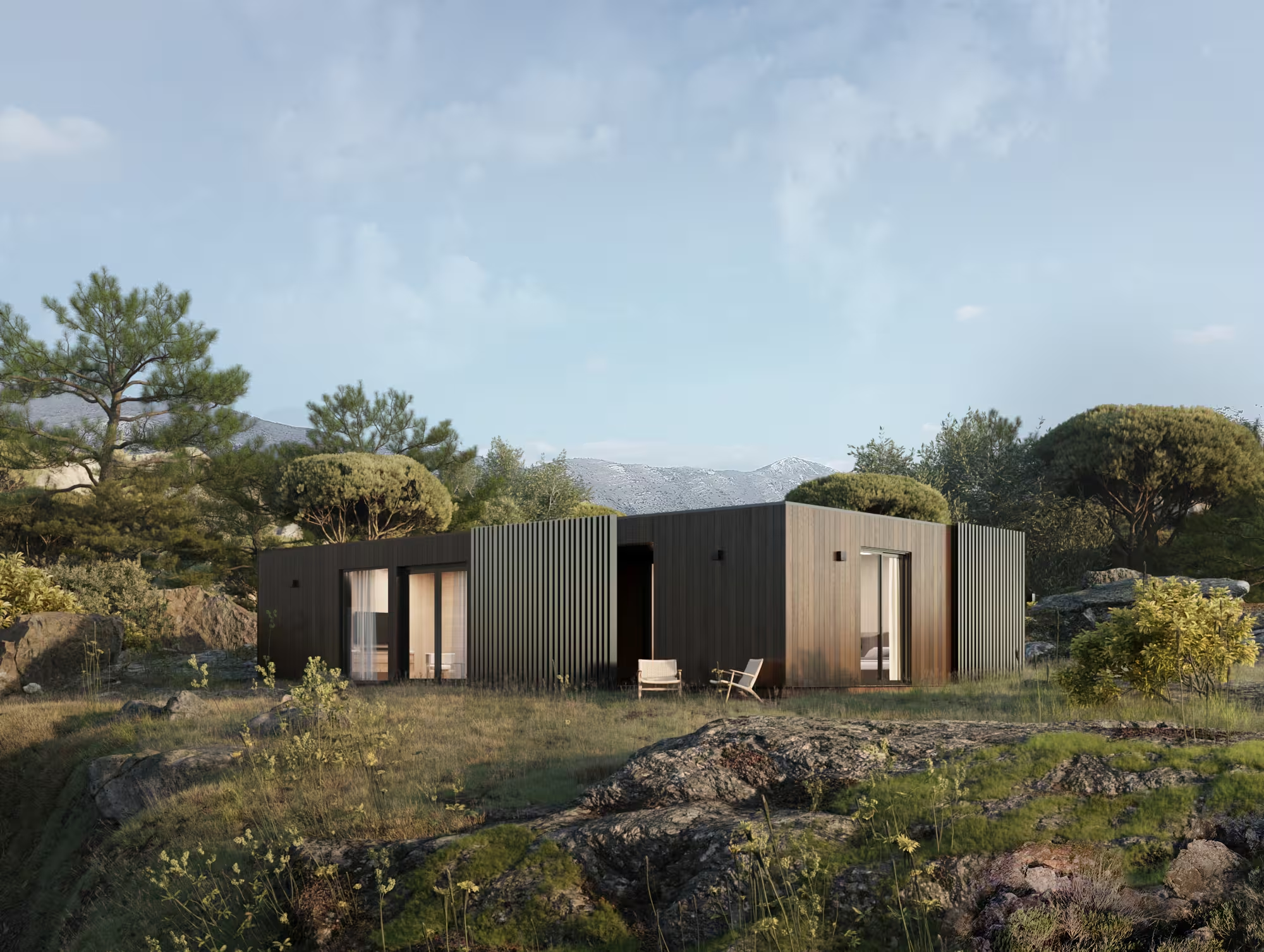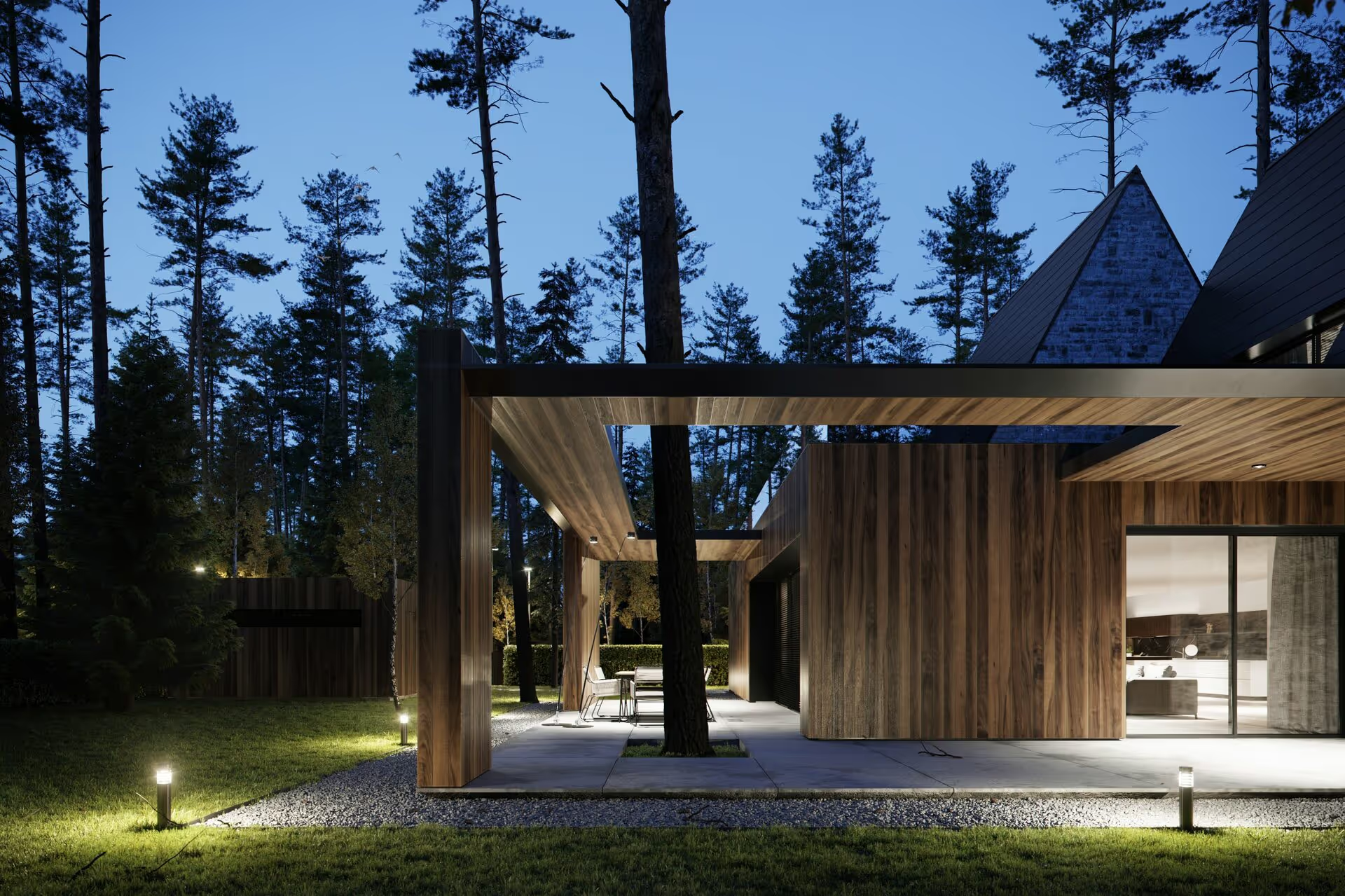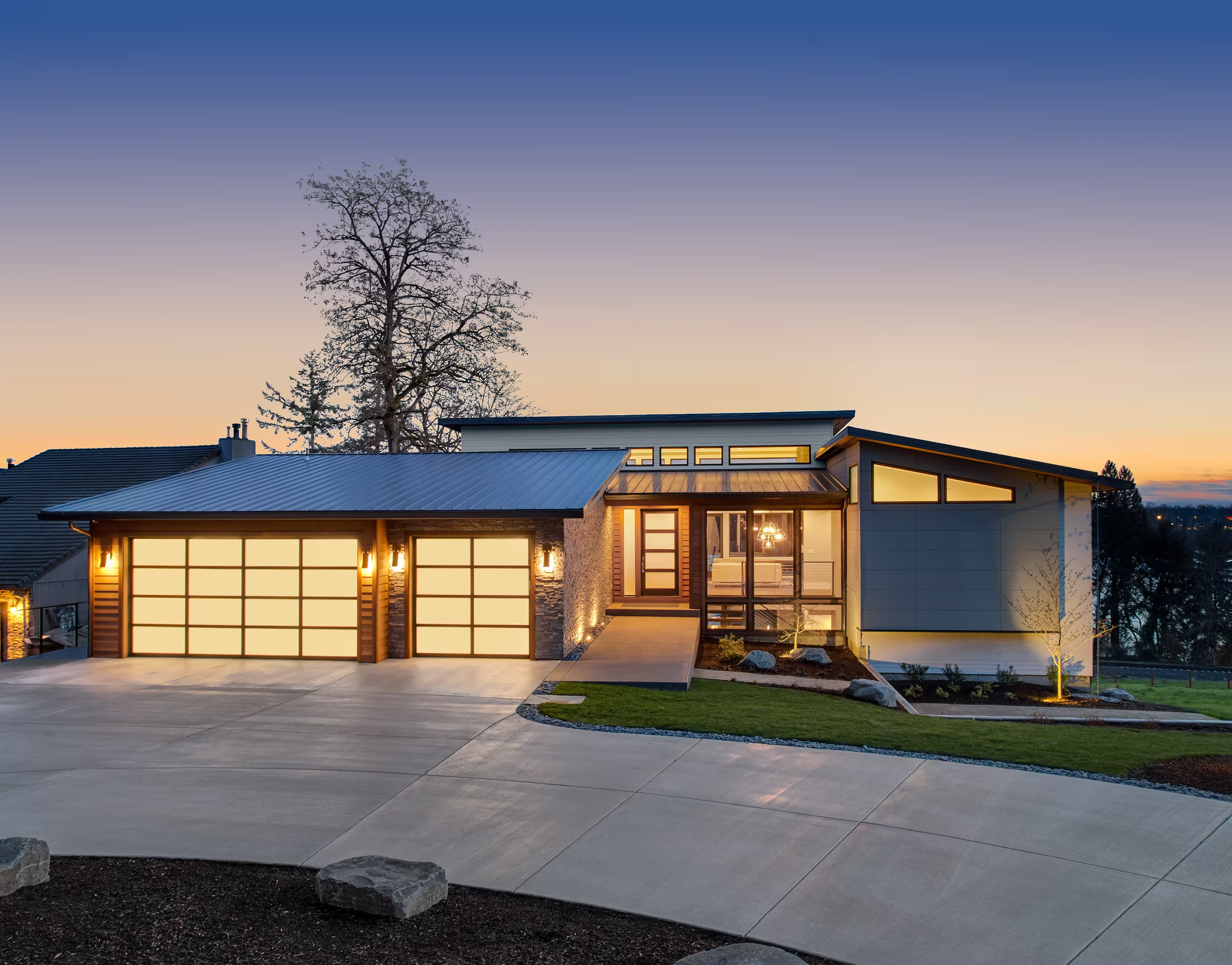Wildfires in California have devastated thousands of homes in recent years, forcing homeowners and builders to rethink how houses are constructed. The vast majority of homes today are built with Type V construction, meaning they have wood framing and other combustible materials. While this traditional approach is common and cost-effective, it leaves homes highly vulnerable to fire. In contrast, Type II construction uses noncombustible materials (like steel and concrete) for structural elements, dramatically improving a home’s ability to withstand fire.
So what’s the difference? In simple terms, a Type V wood-framed house is like a log cabin – great in many ways, but wood can catch fire easily. A Type II house is built more like a commercial building, with a skeleton of steel or concrete that does not burn. This fundamental difference brings a host of advantages for homeowners in fire-prone areas:
- 🔥 Superior Fire Resistance: A home built with noncombustible structure won’t add fuel to a wildfire. During California wildfires, flying embers can ignite wood siding, roofs, or exposed eaves of a typical Type V house. In a Type II home, those embers find little to burn. The walls, floors, and roof structure are made of fire-resistant materials, giving the house a much better chance to survive a wildfire. Even if flames sweep through the neighborhood, a Type II home is far less likely to burn, and if it does, the fire spreads more slowly. This not only protects your property but also buys valuable time for firefighters and evacuations.
- 🏠 Safer for Occupants and Neighborhoods: Type II construction greatly improves life safety during a fire. Noncombustible materials like steel and concrete don’t ignite, so a fire in one of these homes is more contained and slower to collapse the structure. For homeowners, this means greater peace of mind that your home can endure extreme heat without rapidly going up in flames. And if more homes in a community are fire-resilient, there’s less chance of one burning house causing the whole block to burn. In recent California fires, there have been striking examples of a few homes left standing in a scorched neighborhood – often those built with fire-resilient design (metal roofs, concrete walls, etc.), proving that smarter construction can make a life-or-death difference.
- 💼 Insurance Benefits and Future Requirements: Home insurance has become a serious concern in California’s high fire risk areas. Many insurers have even stopped writing new policies in wildfire zones, and premiums are skyrocketing. Building with fire-resistant methods like Type II can make your home insurable when others might be denied. In fact, insurance companies and state regulators are starting to encourage fire-hardening – for example, California now requires insurers to offer discounts for wildfire safety features (though small now, they are expected to grow). Some experts believe that in the near future, homes in severe fire zones might need to meet strict fire-resilience standards just to get insurance. By choosing a noncombustible Type II home now, you’re ahead of the curve. You’ll likely enjoy better insurance rates and avoid the risk of being uninsurable as requirements tighten. Simply put, building for fire resilience protects not only your family but also your financial security.
- 🔨 Durability and Low Maintenance: Swapping wood framing for steel or concrete has other perks. These noncombustible materials are not prone to rot, termites, or mold in the way wood is. They create a sturdier structure that can last longer with less maintenance. You won’t worry about pests eating away at the frame, and if a small fire starts inside the house (say, an electrical spark or kitchen fire), the structure itself won’t catch fire. That means less damage and easier repairs. Many Type II homes also use fire-resistant exterior finishes (like fiber-cement siding, stucco, or metal roofing), which often have longer lifespans than wood siding or shingles. All of this adds up to a home that stays solid and safe for decades.
- ⏱️ Speed and Cost – No Trade-Offs: One reason wood framing (Type V) has dominated homebuilding is that it’s familiar and typically cheap. However, modern construction technology has closed the gap. Innovative builders like Platform have developed methods to construct Type II homes just as fast and at similar cost to a traditional wood home. Prefabricated steel framing, insulated concrete panels, and other advancements allow noncombustible homes to be assembled efficiently, reducing labor and delays. In fact, building with steel can streamline inspections and improve quality control (since components are precisely manufactured), saving time. The result: Homebuyers can get a superior fire-safe product without paying a premium or waiting longer. You no longer have to choose between safety and affordability – you can have both.
Why This Matters for California Homebuyers
California’s beautiful landscapes come with wildfire risks that are among the highest in the nation. If you’re building or buying a home in a fire-prone area (especially in the wildland-urban interface zones across California), understanding construction types could save your home one day. A Type V wood home might meet current code, but it will always be at high risk when the next big wildfire strikes. Every summer, we see headlines of neighborhoods wiped out by fire – and we also see the occasional story of the “house that survived” because it was built smarter. Those survivors aren’t miracles; they’re the result of using fire-resistant design and materials.
Type II construction is emerging as the future of homebuilding in these regions. Local governments and experts are increasingly advocating for noncombustible construction in fire zones. There’s talk of tighter building codes that could effectively require noncombustible materials in certain high-risk areas to prevent repeat disasters. Choosing a Type II home now means you’re building to the higher standard that many believe will soon be common practice. It’s a forward-looking choice that protects your investment long-term.
Platform’s Fire-Resilient Homes: Leading the Way
At Platform, we have embraced Type II construction for all our homes because we firmly believe in safety and resilience without compromise. Every Platform home in California is built with a noncombustible structural system – no wood studs that could become kindling in a wildfire. From steel framing and fire-rated exterior materials to tempered windows and ember-resistant vents, our homes are engineered top-to-bottom for wildfire resilience. And we do this while maintaining the same competitive pricing and build timelines you’d expect from a conventional homebuilder. In fact, through efficient design and off-site fabrication, we often deliver homes faster than a traditional stick-built approach.
The advantages are clear: When you invest in a Platform home built with Type II construction, you’re getting far more than a code-compliant house. You’re getting a home that is significantly safer for your family, one that can stand strong when exposed to fire, and one that will likely retain insurance coverage and value even as wildfire risks grow. You’re also joining a new wave of homeowners who refuse to accept the old trade-offs. We believe that building for fire resilience is not only the responsible choice – it’s quickly becoming the essential choice in California’s fire-prone areas.
To learn more about our process and pricing, schedule a call with one of our Project Experts.
